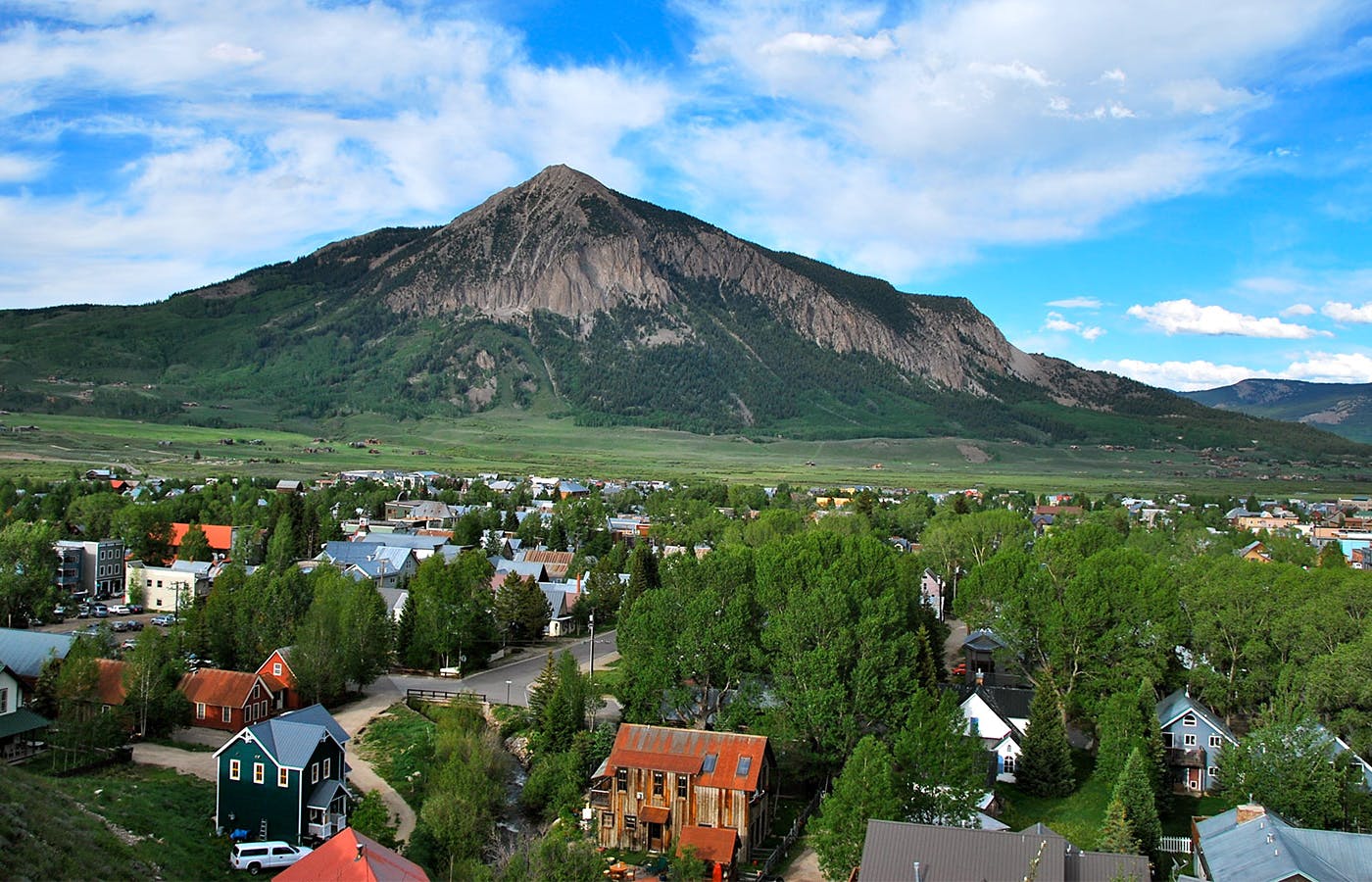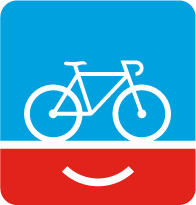Crested Butte’s Answer to Car Dependency? Boots, Bikes and Buses
By: Jack Foersterling, PeopleForBikes’ copywriter + editor

It may be known as one of the birthplaces of mountain biking in the U.S., but Crested Butte’s community of single-speed townie bikes is helping cut off the need for cars.
Originally home to the Ute people, Crested Butte, Colorado, like many mountain towns across the American West, was settled by miners in the late 1800s in search of gold, silver and later, coal. After the mines closed, a new group of residents began to call Crested Butte home, with hippies and self-proclaimed “ski bums” flocking to the region in the early 1960s shortly after a new ski area was carved into the side of Mount Crested Butte just a few miles north of town.
“The hippies came for the skiing. At the time, biking was purely a form of transportation,” said Troy Russ, community development director for the town of Crested Butte. “None of the roads were paved and the potholes were so bad bikes were the easiest way to get around.”
Elk Avenue, Crested Butte’s main drag, wasn’t paved until 1976, and as harsh winters came and went, the potholes got worse, and locals were tasked with making bikes that could handle the ever-deteriorating roads. Modifying road bikes with old motorcycle parts, junk metal and whatever else they could find, those dedicated Crested Butte cyclists, alongside similar adventure seekers in Marin County, California, are now acknowledged as the pioneers of mountain biking in the U.S.
Many of those original “klunker” riders still live in the town of less than 1,500, and Russ points to them as one of the main reasons bicycling is still so popular as a form of transportation in Crested Butte today. “I like to think of it as the ‘10,000 hours’ idea. You become proficient in something when you do it for that long,” said Russ. “When all those original locals did was ride their bikes, they passed that habit down to their kids, who are now passing it down to their kids. That original culture of riding your bike to get around is still alive and well in Crested Butte.”
In PeopleForBikes’ 2022 City Ratings, Crested Butte ranked #4 among more than 1,000 U.S. cities. An impressive Bicycle Network Analysis score of 87 (out of a possible 100) boosted Crested Butte’s spot in the rankings, and for anyone who’s visited the small mountain town, it comes as no surprise that it’s a great (and safe) place to ride a bike.
Even though Crested Butte doesn’t boast any on-street bike infrastructure, every street in town has a 15 mph speed limit, and with the number of people riding bikes, you’ll often find cars driving even slower. Still, Russ says the town is pushing to make things slower and safer for pedestrians and bicyclists. “Even with a 15 mph speed limit, we’re still working to make our streets more liveable. By installing one or two flower box bulb outs per block, we’ve been able to calm streets by 3 mph.”
With a “downtown” of just over 10 square blocks, bicycling is also often the quickest way to get where you need to go. During the more-crowded summer months, you’re likely to find Crested Butte’s streets and bike racks lined with “townies,” single speed cruiser bikes used for everything from getting groceries to stopping by the post office to commuting to a rec-league softball game, all no more than a five-minute bike ride away.
Still, like many small mountain towns and tourist destinations across the U.S., the number of visitors to Crested Butte is growing each year, and with that growth comes the inevitable congestion of more cars on already-at-capacity streets.
“Growth creates congestion. The decision you have to make is whether you’re going to fight it or accept it,” said Russ, pointing out that the usual first order of fighting congestion is widening roads, or building more of them. “Widening roads to accommodate traffic is like loosening your belt to fight obesity. By accepting congestion, we’re pushing people to change their behavior. They’re either not going to make the trip at all, or they’re going to choose a different mode of transportation.”
In tandem with Crested Butte’s ease of bikeability is the town’s free bus system, which loops through town and heads up the hill to Mount Crested Butte, CB’s sister town to the north and home to the ski resort. The exotically painted buses were first funded by a dedicated sales tax in the early 80s, and Russ says keeping them free to ride is key to keeping people out of cars.
“We’re working on finalizing our Community Compass — our guiding values — and a big part of that is our strategic action plan around the ways we move,” said Russ. “Our primary strategy is reducing the dependency on cars. And the answer is boots, bikes and buses.”
For Dave Ochs, executive director of the Crested Butte Mountain Bike Association (CBMBA), fostering that culture of leaving the car behind is key to the town’s healthy growth. “That’s the beauty of Crested Butte, people see that culture and they want to embrace it,” said Ochs. “The folks that move here want to engage with the culture — they want to live healthier and be a part of the solution and not a part of the problem.”
It’s that exact embrace of the culture that shines for Crested Butte’s mountain bike scene as well. Ochs says it’s not uncommon for there to be anywhere in the ballpark of 150-200 volunteers on any given trail building/maintenance day, and in a valley of less than 2,500 people, the numbers don’t lie — Crested Butte residents love to bike, and they give back to their biking community.
“This town eats, sleeps and breathes bikes,” said Ochs, who moved to Crested Butte in 2001 and was, like most, instantly enamored with what the town had to offer. “I joined the [CBMBA] board right away as a way to give back. I wanted to support this amazing trail network and community.”
Home to more than 700 miles of singletrack and arguably some of the most stunning mountain biking trails in the U.S. (Crested Butte is officially the wildflower capital of Colorado, with the best flower peeping being trailside), it would be easy for Crested Butte to rest on its laurels, but Ochs says CBMBA is constantly working to maintain and improve their impressive network.
“Our biggest priority at the moment is our riders off the road plan,” said Ochs. “We’re focusing on connectivity between existing trails. We have a lot of great singletrack, but if you have to ride on the road to connect or end your ride, that’s not a great experience for riders or cars. We want to change how folks get from one place to another.”
Looking ahead, the future is bright for biking in Crested Butte. With people like Russ and Ochs in positions who believe in the power of getting folks out of cars and onto two wheels or their own two feet, backed by a town that has embraced and pioneered the possibilities of bicycling for more than 50 years, Crested Butte stands as a shining example of the benefits bikes can bring to any community.

